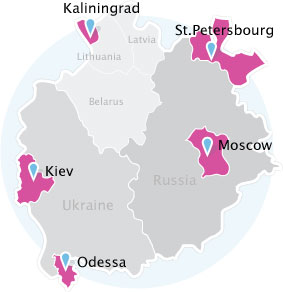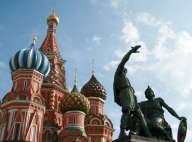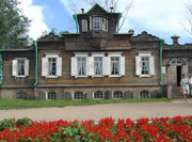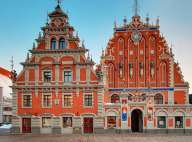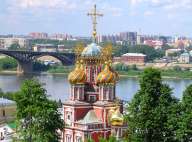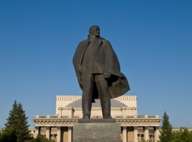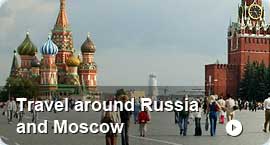History of the Russian Language
History of the Russian Language
The sixth century AD saw the migration of the Slav people from old Poland. The Slavs expanded westwards to the river Elbe and southwards to the Adriatic sea where they gradually occupied much of the Balkans (more detailed account of Russian history). By the tenth century, three Slavonic language groups had emerged: Western, Southern and Eastern. Eastern Slavonic gave rise to the modern languages known as Ukranian, Belorussian and Russian. The Slavonic languages retained many features in common especially in grammatical structure, therefore the separate groups were able to use one common written language. This language was known as Old Slavonic or Old Church Slavonic (the language was used in its written form only). In the ninth century, two missionaries – Constantine (who on his deathbed took the monastic name Cyril) and Methodius – were required to write down the scriptures in Old Church Slavonic and to preach Christianity to the people of Moravia. Before they set out for Moravia, Constantine invented a Slavonic, now known as the Cyrillic alphabet. The Cyrillic alphabet is closely based on the Greek alphabet, with about a dozen additional letters invented to represent Slavic sounds not found in Greek (Russian prononciation and cyrillic alphabet guide)
English/Russian/English Electronic Dictionary

In Russia, Cyrillic was first written in the early Middle Ages in clear-cut, legible ustav (large letters). Later a succession of cursive forms developed. In the early eighteenth century, under Peter the Great, the forms of letters were simplified and regularized, with some appropriate only to Greek being removed. Further unnecessary letters were expunged in 1918, leaving the alphabet as it is today.
In Russia, Old Church Slavonic remained the written language until the middle of the eighteenth century. By this time, the need was felt for a written language which was closer to the educated spoken norm. The famous M. V. Lomonosov, after which the Moscow State University is named, distinguished three styles:
- 1) High Style – Church Slavonic, to be used for poetics and religion.
- 2) Middle Style – to be used for lyric poetry, prose and science.
- 3) Low Style – to be used in personal correspondence and in low comedy.
The Middle Style, which combined features of both East Slavonic and Church Slavonic is the style which came to form the basis of the modern standard language. In the mid 1800’s, Standard Russian based on the Moscow dialect became the official language. Today Russian is the most important of the Slavic languages and is now one of the major languages of the world. It is also one of the official languages of the United Nations. In a recent census, 153 million people listed Russian as their mother tongue and another 61 million indicated they spoke it fluently as a second language. The number of Russian speakers world-wide could be in the region of 220 million.
The Russian language allows an interesting way of addressing people to whom you have just been introduced. The person’s first name is combined with a modified form of his or her father’s first name. If a man’s first name is Ivan and his father’s first name is also Ivan, you would call him Ivan Ivanovich (Ivan, son of Ivan), and if Ivan had a sister, she would be called Natasha Ivanovna, (Natasha, daughter of Ivan). The -ovich and -ovna suffixes are always appended to the father’s first name and not to the mother’s.
A recent source of interest is the transliteration of the cyrillic alphabet into computer coded languages (e.g., KOI-8, cyrillic windows-1251). For more on the russification of your computer and instructions to use cyrillic alphabets for Windows and your Internet Browser, check out Paul Gorodyansky’s page about Internet russification and transliteration issues.
If you have any question regarding the Russian language, please do not hesitate to post your message on our message board.

